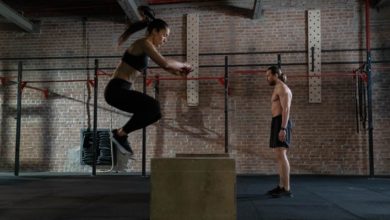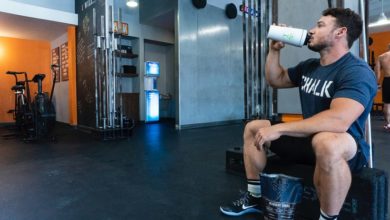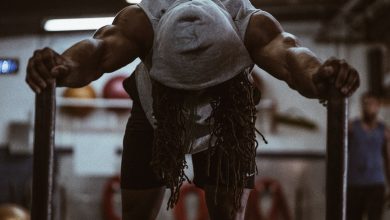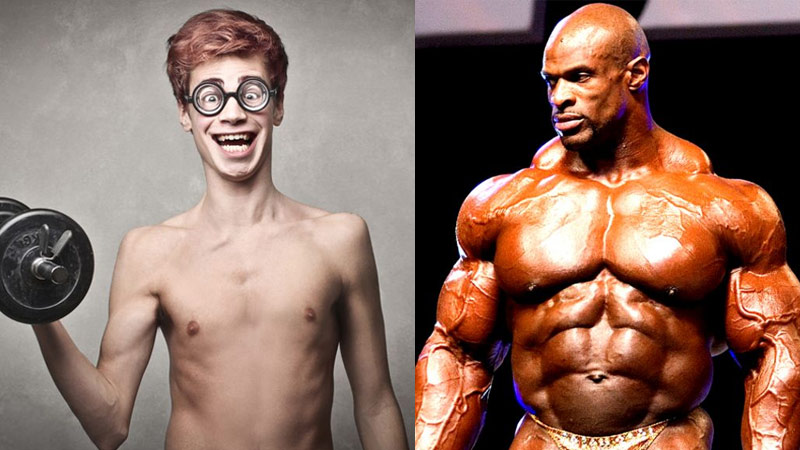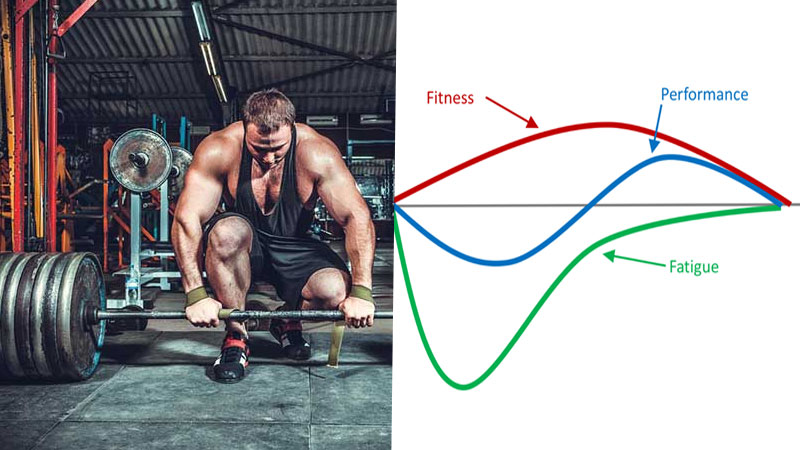
Improving your strength and packing on solid slabs of quality muscle all comes down to ramping up fitness and avoiding excessive fatigue.
You can sweat, bleed and cry. You can grind out rep after rep in the gym. But if you aren’t being clever about the way you train, you’re just wasting energy.
The fitness fatigue model is a principle you can follow to find the sweet spot between working yourself into the ground or building yourself up.
If you’ve ever pushed your body through a phase of training that was way too hard and suffered the fatigue, exhaustion and loss of strength that comes with it, you’ll know all too well why this model is important.
But if you’ve not come across it before, give this article a read…
Fatigue, stress and adapting to exercise
Elite athletes follow a systemized way of training to get the very best from their bodies. It’s only with planning a progressive strength, fitness and conditioning plan that they can keep pushing the limits of ultimate performance.
You might not be a pro athlete quite yet, but all bros should consider ditching the ‘flying blind’ approach and take the time to plan each factor of their program.
Train like an athlete and perform like one too.
The general adaptation syndrome
Back in the 1950s, life was simple. It was all about rock and roll, the baby boom and the Peanuts comic strip. The women were hot too.
But in the background of Elvis and all American diners, a scientist called Hans Selye was developing a model of stress that was soon to become the basis of exercise stress-response.
His model, called the general adaptation syndrome, suggested that when the body is presented with a ‘stressor’, it follows the same adaptations no matter whether its physical or psychological.
In the context of exercise training, this meant:
- Alarm phase – this is the stimulus from exercise and has a short term, negative effect on performance.
- Resistance phase – after a period of training, your performance improves, providing you are fully recovered.
- Exhaustion phase – if you don’t add recovery your performance will drop fast. We know this as overtraining
The problem with this model though was that it wasn’t designed specifically for exercise.
And even though it led to the use of linear periodization programs in elite athlete training, there were loads of gaps in the science left by Selye’s work.
For example, you might experience multiple stressors at any one time (physical, emotional, nutritional), and all of these will affect you differently – or at least affect you differently to someone else.
A few years later, a new model was proposed to update it…
The fitness fatigue model
Sometimes referred to as the ‘dual factor theory’, the fitness fatigue model came out during the time of big hair, the Walkman and sh*t music.
Yep, the 1980s.
The fitness fatigue model saw holes in the general adaptation model around exercise stress. And that didn’t take into account the fact that different stressors result in a variety of responses.
It wasn’t intended to replace Selye’s work, but to build on the gaps that it left in the science.
In other words, you personally might be able to go through a 4 week ultra-high volume program and get jacked, while your training buddy is on his ass with sore muscles, fatigue and a common cold.
Everyone has an individual tolerance to the stimulus of exercise.
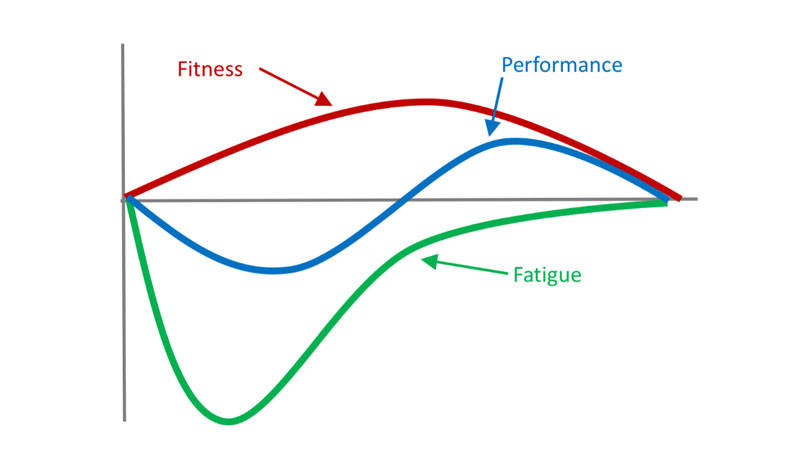
You either get fitter or suffer from excess fatigue
The whole premise of the fitness fatigue model is that after training, two things occur.
- Increased fitness
- Elevated fatigue
What happens between these two factors is ultimately whether or not you adapt to your session positively or negatively.
The fitness after-effect is what you want to achieve from training. It’s all about pushing your body to respond to the stimulus of the session positively.
Fatigue after-effects on the other hand is more negative and sees you experience a drop in performance due to tiredness, staleness and fatigue.
The fitness fatigue model explained
What determines a good workout is whether the fitness benefits outweigh the fatigue effects.
Once you’ve finished a blast of HIIT training or a balls-to-the-wall strength training session, your body begins to adapt immediately.
As you can see from the diagram above, fatigue kicks in hard fast. Fitness increases on a much steadier upward curve though and lasts longer before returning to baseline.
And the result of the workout is dependent on whether the stimulus to improve performance or ‘fitness’ outweighs the effects of fatigue.
Fatigue impulse is pretty high after a workout. It’s much higher than that of fitness, which is why performance decreases straight after an exercise session.
But decreases rapidly in comparison.
You can take advantage of this ‘slow burning’ fitness effect as long as fatigue is allowed to return to baseline before another workout.
In other words, don’t train every day without rest, or fatigue will begin to have a big impact on performance and you’ll not adapt to fitness stimuli.

Balancing fatigue with supercompensation
Ultimately, you train to get jacked – that means stronger, fitter and more muscular. Supercompensation is where your body adapts and improves.
According to strength and conditioning gurus such as the great Vladimir Zatsiorsky, fitness effects last 3 times longer than fatigue.
In other words, if you put yourself through a brutal workout that leaves you fatigued for a good 48 hours after wards, the positive fitness effects will last for as long as 6 days.
And that’s an important aspect of exercise planning.
So what does this mean for you?
Models, theories and hypotheses are all good and well. But as an avid SpotMeBro reader, we know that you want to know how this impacts your training.
Because learning is great, but gains are greater.
Time your workouts around fatigue
As a well-trained and serious lifter, your main aim is to improve your fitness. Whether that’s strength, muscle mass, endurance or sports-specific performance.
There’s a sweet spot for your workouts that you should be aiming for time and time again based around the fitness fatigue model.
When it comes to repeating a workout, you should be aiming for a point where fatigue has disappeared, but fitness improvements still remain.
That way, you can take advantage of low fatigue but higher fitness levels and begin to step up the intensity slightly (you might know this as progressive overload) and let strength and mass increase.
Avoiding training the same muscle every day helps to force supercompensation to occur. Research shows that hitting a muscle twice per week is optimal.
If you repeat your workout too early you run the risk of accumulating more and more fatigue. Ultimately you’ll end up cruising down the rabbit hole of overtraining.
But if you wait too long you’ll have missed your fitness window of opportunity and lost your performance gains.
Maximizing performance and delaying fatigue
Pull of the theory of the fitness fatigue model together and you’re left with some pretty damn useful information to help you plan your workout program.
Firstly, rest and recovery are important.
Secondly, there’s no benefit to training a muscle everyday.
Additionally, having a week or so away from strenuous training every couple of months helps to decrease the fatigue you’ve built up over time. It also helps you avoid any negative effects to fitness levels.
If you feel excessively fatigued during a workout, ease back a little. This so called ‘autoregulatory’ approach decreases the chances of injury and helps promote short-term recovery.
There’s no point in trying to push through a tough workout if you’ve nothing in the tank.
It doesn’t make you a pussy, it makes you a clever trainer.

Summary – Using the fitness fatigue model to ramp up performance
Athletes that perform at their best time and time again understand the importance of rest and recovery. They also know that you need to train hard enough and regularly enough to maintain high levels of fitness.
The fitness fatigue model shows that fatigue kicks in hard after a tough workout but quickly decreases, whereas fitness benefits burn slowly in the background, but for 3 times as long.
Planning your workouts to take advantage of this will lead to better results – more strength, better endurance and more muscle mass.
And that’s the important part about the gym game.
